A Short History of St Mark's
The town of Bromley is first recorded in the 9th Century, with a charter and a subsequent grant of land to the Bishop of Rochester. For many centuries, the bishops had a palace on the site of the Civic Centre. In the 17th Century, Bishop Warner bequeathed money to establish Bromley College ‘for twenty clergymen’s widows and a Chaplaine’.
Until the middle of the 19th Century, Bromley was small in size and surrounded by countryside. It was, however, a major stop for coaches between Hastings and London. Being only ten miles from the capital, the town saw a rapid growth with the advent of the railways from 1858 and especially in the south. Bromley was originally served by its parish church – the church of St Peter & St Paul. By the 1880s there was a worshipping community in the Bromley South area as the town expanded and, Eley Soames having donated a site near Masons Hill, an iron church was erected in 1884 with fixtures and fittings given by Samuel Cawston. This church served as a place of worship until 1898 and became the church hall thereafter, being rebuilt in 1930 thanks to a further gift from the Soames family. It later served as the Bromley Labour Club headquarters, known as the H G Wells Centre.
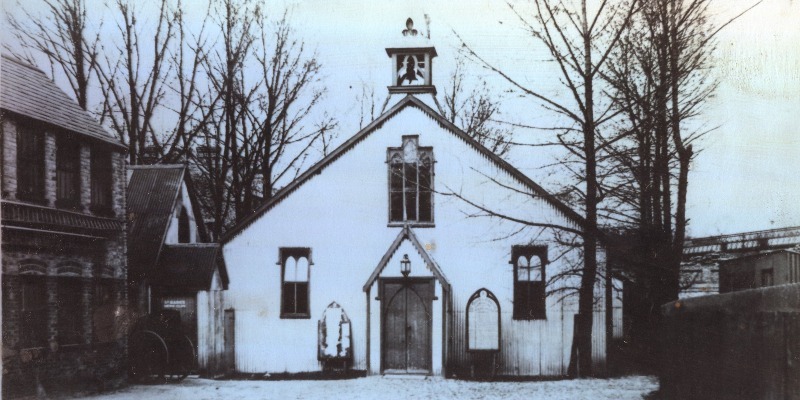
The Iron Church 1898-1930
St Mark's Road
In 1896 a site was purchased for £500 by Thomas Dewey and Eley Soames at the foot of Westmoreland Road, adjoining one of the tributaries of the River Ravensbourne. A meeting was held at Mr Dewey's house in South Hill Wood to agree the plans of the architect, Evelyn Hellicar, son of the Vicar of Bromley and building work began. The new church building was consecrated on 22nd October, 1898 by the Bishop of Dover, with the Tower being raised to its full height in 1903 and dedicated on 10th January 1904. For the next 36 years, St Mark’s served as a chapel-of-ease for the Parish Church, becoming an independent independent parish only in 1940, with our first Vicar being installed only in 1947.
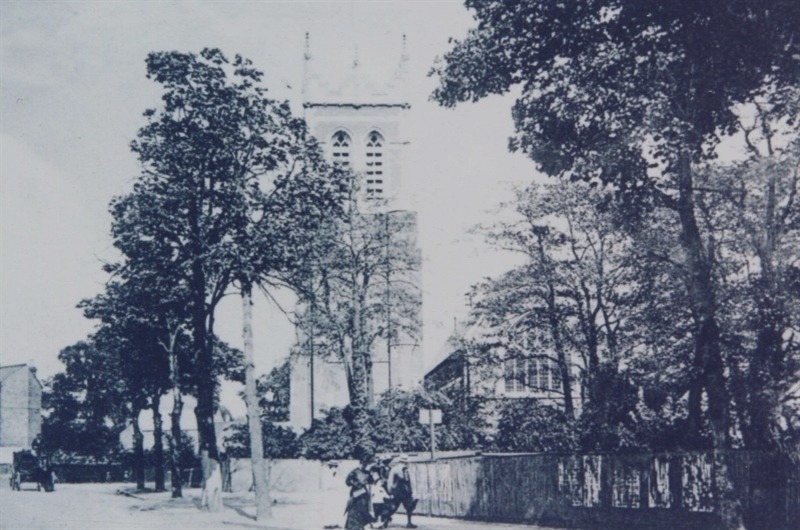
St Mark's Church circa 1910
Devastation and Rebuilding
In April 1941 both the mother church (St Peter & St Paul) and St Mark’s as well as several other local churches were heavily bombed in what became known as a ‘church raid’. The tower was left standing but the interior of the church was largely destroyed. Services were held in the church hall until 1953.
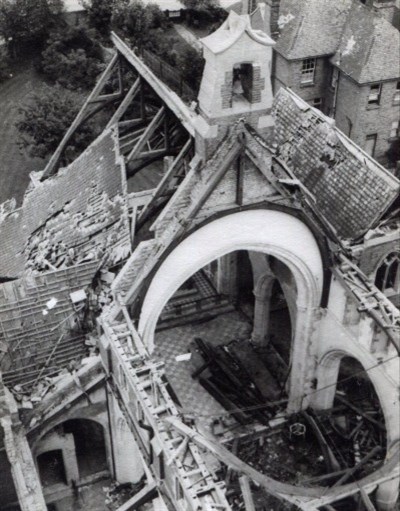
The aftermath of the bombing
April 1941
After the end of the war the church community worked quickly to restore the building to it's former glory. Following the plans of the new architect TGW Grant the original foundations were reused, preserving the previous dimensions and shape, but Hellicar's perpendicular design in the Nave was replaced with parabolic arches. The Victorian carved capitals, the choir stalls and the reredos were saved and reused. On 3rd June 1952, HRH Princess Marina, Duchess of Kent, laid the cornerstone of the partially restored church in the presence of around 600 people, including the Rt. Revd Charles Chevasse, Bishop of Rochester, the Mayor of Bromley and the local MP, Right Hon Harold Macmillan, later to become Prime Minister from 1957-63.
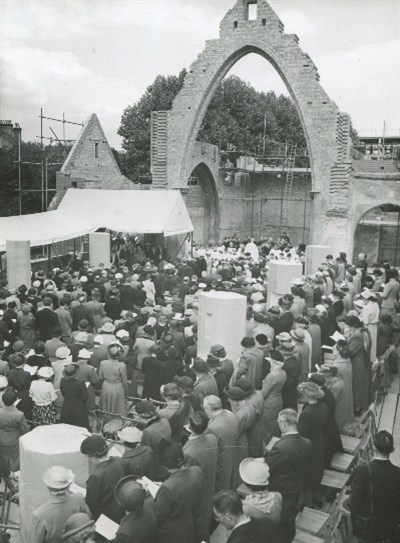
Service of Re-dedication
June 1952
Just over a year later on Saturday 18th July 1953 the newly-restored church was consecrated and hallowed by the Bishop of Rochester. The total cost of re-construction was in excess of £34,000 of which £7,000 was raised by the parishioners with the Vicar, the Revd Harry Edwards collecting £830 in the final 24 hours before the ceremony. A packed congregation of over 750 people gazed "upon the dazzling white walls, the beautiful newly painted reredos and the newness of everything inside the rebuilt church".
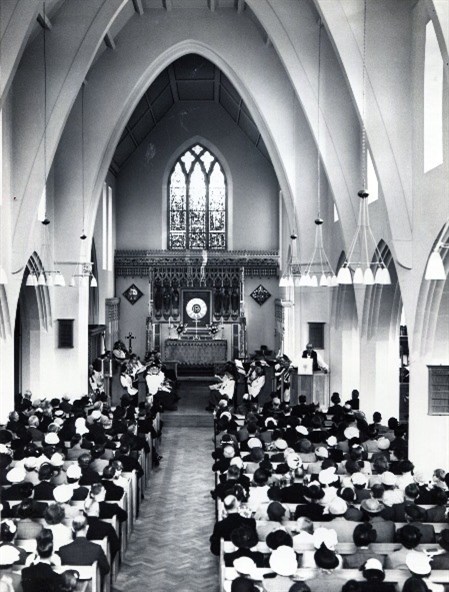
Reconsecration Service
July 1953
Recent Developments
In 1980 the new Church Hall was completed on site and provides and excellent space for social activities, meetings and gatherings after services. Starting in 2014 St Mark's embarked upon a three year project to reshape the Garden of Remembrance at the rear of the building, with memorial benches in the niches of the outside walls being installed. At the same time the front gardens were opened up to give greater access to the public
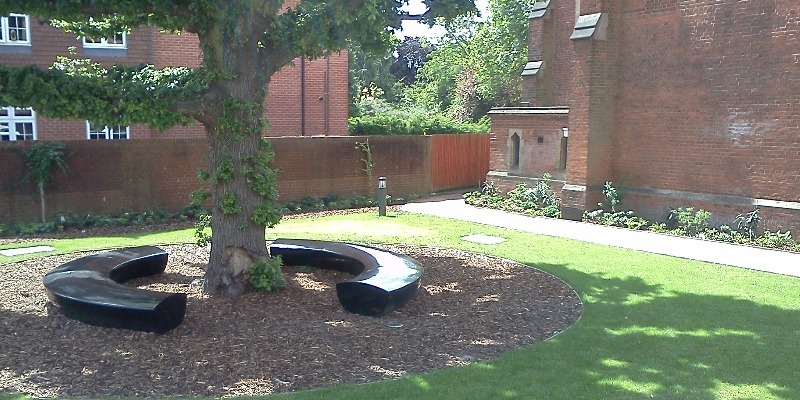
The newly-laid Church Gardens and public benches
The formation of the Friends of St Mark’s in 1989 has financed significant enhancements and refurbishments to the church's fabric and we are most grateful to the Friends, as we are to all our benefactors.
Further information about the history of St Mark's can be obtained from the booklets which can be found on the information stand in the Church.